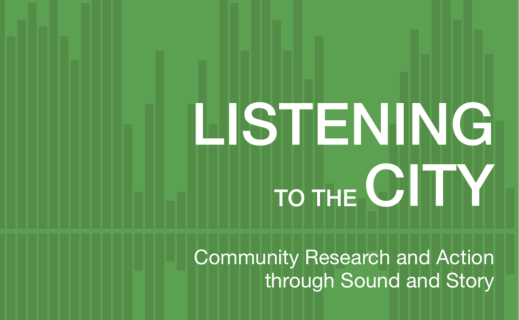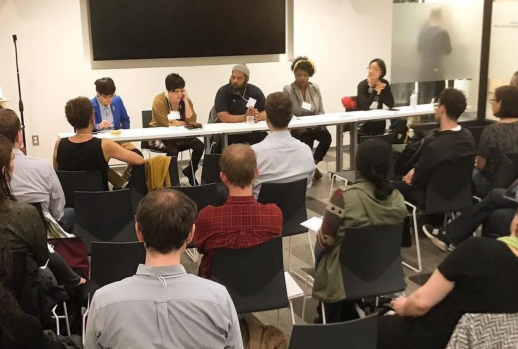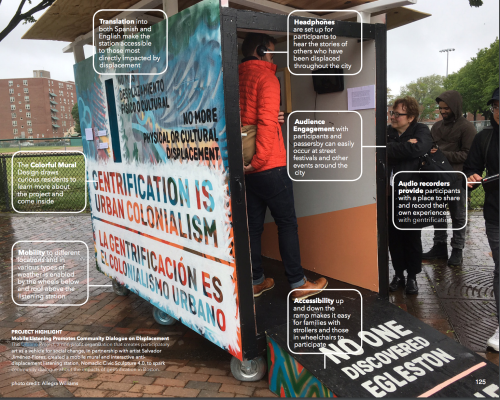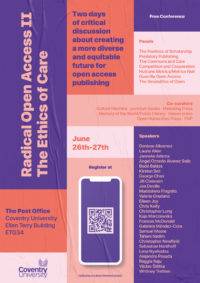We are thrilled to feature this interview with Kathleen Fitzpatrick as the second installment in our new interview series—in which we ask researchers and librarians about their work in, and thinking about, open access in media studies. Fitzpatrick hardly needs an introduction, given her seminal role in a variety of open access and scholarly communication projects. Last year she joined Michigan State as Director of Digital Humanities and Professor of English. Before, she served as Director of Scholarly Communication of the Modern Language Association, where she helped shepherd the open access, open source network Humanities Commons. She co-founded the innovative scholarly communication initiative MediaCommons, and is author of Planned Obsolescence (2011) and The Anxiety of Obsolescence (2006). Follow her thoughts at @kfitz and her website.
OAMS: For years you have been an active participant in the movement for open scholarship. With all your work for MLA Commons, Media Commons and now Humanities Commons—and writings like Planned Obsolescence—you’ve made a tremendous contribution to the debate on how we should move to openness in the humanities. Despite those efforts, it’s arguably true that the transition to open access in the humanities is taking longer than we want. What do you think are the main barriers and challenges for the humanities and the route toward open access in the next five years?
KF: There are a number of different challenges, and I worry that one has not only absorbed most of our focus but in fact distracted us from the far greater importance of the others. That one that has loomed so large is sustainability — or, perhaps more accurately, business model: how to make open-access publishing financially viable. For not-for-profit publishers like many scholarly societies and university presses, this remains a pressing issue; they simply cannot pay the professionals required to do the work and continue to break even, given the actual availability of article- and book-processing fees in the humanities and social sciences. There are organizations in the U.S. that are working on new approaches to this problem, including a coalition formed by the Association of American Universities, the Association of Research Libraries, and the Association of University Presses, but the challenge remains.
But this question of business model winds up overshadowing at least two other challenges to the widespread adoption of open access in the humanities that I tend to think are vastly more important. In focusing on the sustainability of the publishing process, we run the risk of overlooking the question of its equity: do all scholars, in all fields, at all kinds of institutions, in all areas of the world, have the same ability to publish? For some fairly obvious reasons, the early emphasis of the open access movement was on equity in consumption, ensuring that any interested reader or researcher could get ahold of work that they might learn from. But having learned from that work, can those readers and researchers now contribute to these conversations? True equity requires us to think about ways of opening up the entirety of the scholarly conversation to all participants, wherever in the world they are, wherever they work.
And the other challenge may be even more daunting: ensuring that publishing in open-access venues is a researcher priority. This one is all about ensuring that academic practices are in line with the best of academic values, and it involves both changing individual researcher behavior and changing the institutional reward systems that underpin it. And neither is easy, but both are crucial. The deepest goals of open access simply cannot be reached without those transformations, and all our concerns with how we’re going to pay for it—which are real and substantial, don’t get me wrong — don’t begin to make a dent in these larger questions of equity and values.
OAMS: What are your thoughts about the current model of humanities publishing, particularly monographs? What, in your view, needs to change in the university system, academic publishing, or both, to quicken the transition to open access?
KF: So, this might sound a bit as though it contradicts the answer to the last question, but one of the things that needs to change is the economic model under which university press publishing operates. University presses, at least in the United States, were originally founded in order to distribute the work done at their institutions, precisely because it was apparent that there was no market for that work within conventional publishing channels. These campus-based presses shared the work they published with institutions around the country, knowing that other presses would do the same. But over the course of the twentieth century, university presses professionalized; they saw that there was revenue to be earned from at least some of the titles they published, and they argued with their institutions that such revenue should be returned to the press to support its operations. In other words, they turned themselves into businesses operating on university campuses, and the expectation that they would be self-supporting quickly grew.
The university press, in other words, needs to be understood as providing a service to the intellectual community rather than as a revenue center.
If we are to transform monograph publishing, we have to begin with a reconsideration of the university’s responsibility for the dissemination of the scholarship that is produced by its faculty, as well as the importance for the integrity of the scholarship itself that it be permitted to develop outside of market pressures. The university press, in other words, needs to be understood as providing a service to the intellectual community rather than as a revenue center.
But I think there’s another change that has more to do with the ways that the university values and rewards the products of scholarly research, and this change has two components, neither of which can take place without the other. One component is that scholars need to consider whether everything that they’re currently producing in book-form really needs to be a book; perhaps there are other ways of cultivating the audience for research that might in many cases be more productive and less subject to the constraints of book publishing’s current economic model. And the other component is that institutions need to transform their systems of evaluation — particularly what in the U.S. manifest as policies and procedures for tenure and promotion reviews — to recognize that highly important scholarship can be produced in a wide variety of forms, and thus to stop overvaluing that one particular form. Those two changes have to happen hand-in-hand: scholars won’t change their ways of working unless they’re convinced that their institutions will appropriately value work produced in new ways, and institutions see no call to transform their evaluation systems unless their faculty members are demanding such transformation.
OAMS: Academic libraries and librarians have taken a more active role in scholarly communication, through subsidies and even in-house publishing. What role do you see libraries playing in a future, more open publishing ecosystem?
KF: I’ve long argued that libraries have a key role to play in the transitions that I describe above, not least because of their position in knowledge development and dissemination within universities. The conventionally understood library has long gathered the world’s knowledge for use by researchers and students on campus, but as the processes of research and scholarly communication become increasingly intertwined, libraries become hubs for a range of knowledge-development activities rather than just the repositories of information they’re often imagined to be.
The library is ideally positioned not just to bring the world’s knowledge to campus, but to bring the campus’s knowledge to the world.
As a result, the library is ideally positioned not just to bring the world’s knowledge to campus, but to bring the campus’s knowledge to the world. And we see that happening more and more, both with a range of library-centered publishing initiatives as well as with the growing number of university presses that bear some organizational relationship to university libraries. Those relationships are key, I think, as presses can bring some crucial experience to library publishing initiatives — not least the development of publications and the building of audiences — but libraries likewise bring crucial skills and commitments to presses. And key among those is a commitment to the public good.
OAMS: Some recent scholarly-publishing initiatives have stressed that they are “scholar-run”, or have some formalized input from scholars beyond the review process. How important is the active involvement of scholars in humanities publishing going forward?
KF: I strongly believe that such active involvement is crucial to scholarly communication in the humanities, both to ensure that the venues and platforms through which we publish take scholars’ own values as their motivating forces, and to ensure that scholars take full responsibility for the ways that their work circulates in the world. That involvement might take a range of different forms, some more hands-on than others, but governance is crucial: scholars should not be willing to hand over their work to organizations whose business practices aren’t operating in the general interest of the scholarly community, and the best way of ensuring that alignment is participating in the governance of those organizations.
OAMS: Humanities Commons has positioned itself as a nonprofit alternative to the venture funded academic social networks like ResearchGate and Academia.edu. Is HC gaining purchase in the humanities? Are there plans to expand the network/repository beyond the humanities disciplines? What would success look like for HC and other nonprofit initiatives like ScholarlyHub?
 KF: Humanities Commons is indeed gaining purchase, as scholars are increasingly recognizing that while their accounts on for-profit networks might be “free,” there are hidden costs to the academic community as a whole. These networks are not transparent in their operations or their values, and they often have egregious, predatory data-sharing and intellectual property policies written into their terms of service.
KF: Humanities Commons is indeed gaining purchase, as scholars are increasingly recognizing that while their accounts on for-profit networks might be “free,” there are hidden costs to the academic community as a whole. These networks are not transparent in their operations or their values, and they often have egregious, predatory data-sharing and intellectual property policies written into their terms of service.
Humanities Commons is governed by its member societies, which are in turn governed by their members, and so the network and its policies are answerable to scholars and their interests.
Humanities Commons is governed by its member societies, which are in turn governed by their members, and so the network and its policies are answerable to scholars and their interests. And we have since the beginning prioritized transparency in our policies on privacy and intellectual property. Not to mention that Humanities Commons provides many other benefits as well! So many humanities scholars have recently moved away from those other networks to join us, and are encouraging their colleagues to do so as well.
We started the network with a focus on the humanities primarily because humanities fields have long been underserved by new platforms for scholarly communication. But that focus was also strategic: it’s hard to build an engaged community by simply throwing open the doors and inviting everyone. I recognize that this is a somewhat risky example right now, but people often forget that Facebook didn’t begin in a completely open fashion, but instead built local networks that were restricted to particular college campuses; students were motivated to join because their accounts enabled them to reach people they already wanted to communicate with. As more people got on board, those smaller circles were connected, and then once there was a critical mass of participation, the entire thing was opened up to everyone.
We don’t want to be Facebook, by any stretch—see what I said before about transparency, privacy, and so forth—but we recognize the importance of beginning a network by linking known communities, and then by interconnecting those communities and enabling them to open outward. We began our work with scholarly societies, because the members of those societies are already engaged in working together; we then opened up to the humanities as a whole, because humanities scholars are motivated to share their work with one another. We’d like to reach beyond the humanities, to connect the humanities with the social sciences and the sciences, to enable researchers anywhere to reach their audiences through our platform — but we recognize the importance of starting with existing communities of practice, and supporting them as fully as possible as they grow.
OAMS: In recent years, the broader open scholarship community has taken up the “open data” cause. Do you see the the notion of data—sometimes characterized as discrete, quantitative, and machine-readable—as inclusive of humanities scholarship?
KF: The notion of data is not one that a fair number of humanities scholars recognize themselves in, particularly when the quantitative is included in the definition, and yet when we expand our notion of data to encompass any information gathered in the research process, the relationship starts to become apparent. Understanding research data as including the primary and secondary texts we study and the excerpts we glean from and images we record of them, the notes we gather in field research, the transcripts of interviews, the responses to surveys—all of this begins to make evident the importance of preserving and (subject to proper privacy protocols) making humanities data as openly available as possible.
OAMS: What role, if any, should the bundle of fields that study media and communication play in the open access discussion?
KF: Personally, I’d argue that these fields need to be leading the way. If the aftermath of the 2016 U.S. presidential election has revealed nothing else, it’s definitely made clear the vital public importance of research and scholarship examining the channels and platforms through which we communicate today. But we have to make the work as publicly accessible as possible if it’s going to have the impact we all need. Engaging the public directly in thinking critically about the impact of the media in our daily lives will require more of us — starting real conversations, listening to people’s concerns, participating in collaborative projects—but making the work we’re already doing openly available is a crucial place to start.
This interview was conducted together with Jeff Pooley.
Image header: courtesy of Kathleen Fitzpatrick








 Co-curators: Culture Machine, Mattering Press, Memory of the World/Public Library, meson press, Open Humanities Press, punctum books, POP
Co-curators: Culture Machine, Mattering Press, Memory of the World/Public Library, meson press, Open Humanities Press, punctum books, POP